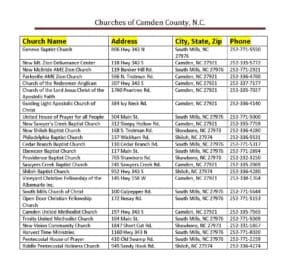Camden’s History
Camden County was formed in 1777 and was named for Charles Pratt, First Lord of Camden. The historic Camden Jailhouse is a two-story brick structure, rebuilt after a fire in 1910. The Camden Courthouse was built in 1847, in the Greek Revival Style, and is still in use today for county business. The historic Dismal Swamp Canal which opened in 1805 is the oldest continually operating man-made canal in the United States. The canal is listed on the National Register of Historic Places, designated as a National Civil Engineering Landmark, a part of the North Carolina and Virginia Civil War Trail and Atlantic Intracoastal Waterway. It is also recognized as part of the National Underground Railroad Network to Freedom and a site on the NC Black Heritage Tour. The Dismal Swamp provided a formidable refuge for runaway enslaved people, or freedom seekers. During the Civil War, attempts to destroy the canal, an important supply link, resulted in the The Battle of South Mills. In later years, notorious moonshiners would also hide their recreational enterprises in the deep, vine covered canopies. Logging history took place in this vast expanse of Atlantic White Cedars. Today, the Dismal Swamp State Park provides exhibits and Ranger programs to educate the public about its colorful past.
Camden County History Link: http://camdencountync.gov/about/history
Historic Camden County Courthouse
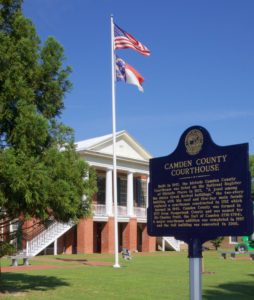
Construction on the historic Camden County Courthouse began in 1846, following a fire that burned the original wooden county structure (1782). This Greek Revival brick structure stands on the site of the original courthouse and was completed in 1847. Several additions and renovations have been made to the courthouse since 1898.
Resource: Camden County Courthouse History
Dismal Swamp
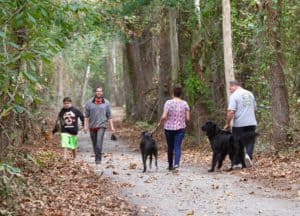
The Great Dismal Swamp is a geological wonder. For millions of years before the Swamp was formed, it was under the sea. It is viewed by naturalists and other scientists as one of the best outdoor laboratories in the world! This natural treasure emerged as a landform when the Continental Shelf made its last significant shift. Colonel William Byrd II surveyed the North Carolina/Virginia state line through the Swamp in 1728 and provided the first extensive description of it. In May 1763, George Washington made his first visit to the Swamp and suggested draining it and digging a north-south canal through it to connect the waters of Chesapeake Bay in Virginia and Albemarle Sound in North Carolina. Two syndicates, Dismal Swamp Land Company and the Adventurers for Draining the Great Dismal Swamp, were formed in hopes of draining the Swamp, harvesting the trees, and using the land for farming. In 1973, Union Camp donated its Virginia swamp holdings to the Nature Conservancy which, in turn, deeded it to the Department of the Interior for creation of the Great Dismal Swamp National Wildlife Refuge. The Refuge consists of 107,000 acres of forested wetlands surrounding Lake Drummond, a 3,100 acre natural lake located in the heart of the swamp. The amber-colored water is preserved by tannic acids from the bark of the juniper, gum and cypress trees, prohibiting growth of bacteria.
Resources:
Dismal Swamp’s History – Dismal Swamp Welcome Center
Dismal Swamp’s History – Dismal Swamp State Park
Great Dismal Swamp National Wildlife Refuge (Located in Suffolk, VA)
Moses Grandy
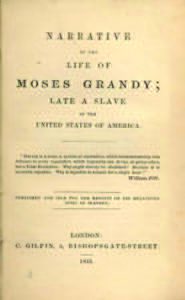
Moses Grandy was born into slavery in Camden County in 1786 and as a youth became interested in maritime occupations. As a result of his skills as a river ferryman, canal boatman, schooner deck man, and lighter captain, he became known as Captain Grandy. A successful waterman, Moses attempted to purchase his freedom three times, but twice was cheated out of his earnings and release. Finally in 1827, Captain Edward Minner, purchased Moses and allowed him to live as a free man. In 1842 Moses sailed to London and met with abolitionist George Thompson, who penned Grandy’s life story. Proceeds from, Narrative of the Life of Moses Grandy; Late a Slave in the United States were used to help liberate Grandy’s enslaved relatives. Additional Moses Grandy content is located at the Dismal Swamp State Park and the Camden County Heritage Museum.
Resources:
Civil War History
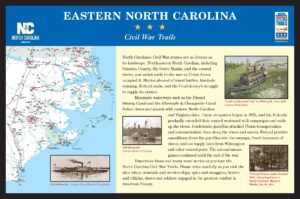
NC Civil War Trails sign is located at the Dismal Swamp Welcome Center.
During the Civil War, the Battle of South Mills occurred in Camden County on April 19, 1862 at the south end of the Dismal Swamp Canal. Victory was claimed on both sides with the Confederacy preventing the destruction of the canal locks at South Mills and the Union capturing the field. Casualties were experienced on both sides. Havoc was wreaked by the Union troops as they returned to their ships at Chantilly. Discover the paths of Union and Confederate soldiers by following the Battle of South Mills Driving Tour brochure and NC Civil War Markers. Additional Civil War content is located at the Camden County Heritage Museum.
Resources:
Marian Anderson High School
Located at the site of Camden County Middle School
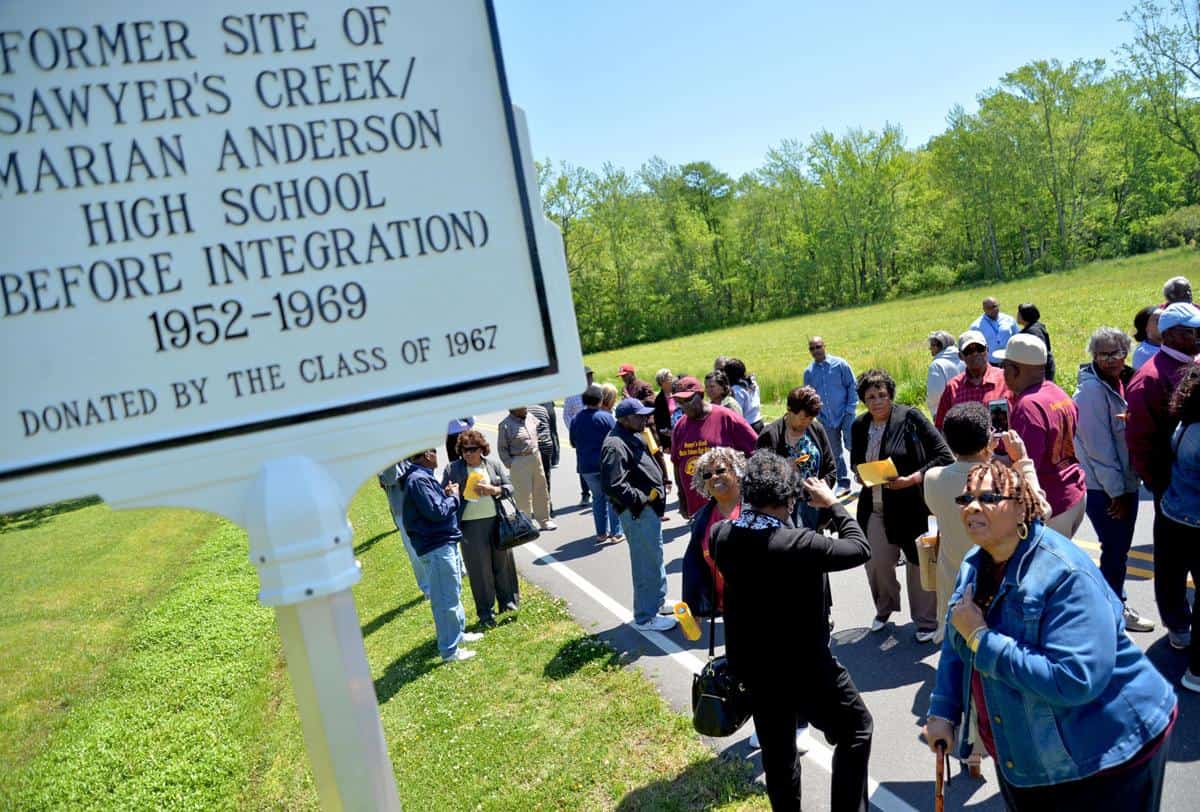
“Former site of Sawyer’s Creek/Marian Anderson High School (Before Integration) 1952-1969. Donated by the Class of 1967.”
Marian Anderson High School, originally named Sawyer’s Creek, was opened in 1952 for Camden County’s African American students. In 1956 Principal W.C. Witherspoon changed the school’s name to honor Marian Anderson, a famous black opera singer. The year 1969 was the school’s final year, as students were integrated to the existing Camden County High School in 1970. The former Anderson school became Camden County Middle School. (NC Black Heritage Tour Site)
Dismal Swamp Canal
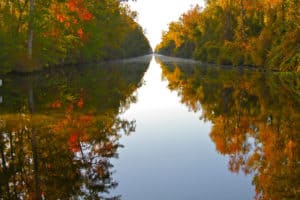
The Dismal Swamp Canal, hand dug by hired enslaved labor, opened to navigation in 1805 after twelve years of backbreaking work under highly unfavorable conditions. This 22 miled long canal allowed trade between the Chesapeake Bay in Virginia and the Albemarle Sound in North Carolina. The Canal is listed on the National Register of Historic Places, designated as a National Civil Engineering Landmark, a part of the North Carolina and Virginia Civil War Trail and Atlantic Intracoastal Waterway (AIWW). It is also recognized as part of the National Underground Railroad Network to Freedom.
Resources:
Shiloh Baptist Church
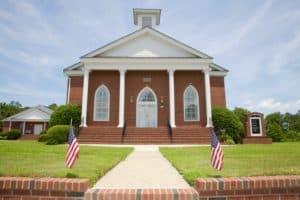
Quickly approaching the 300 year old mark, Shiloh Baptist Church is the oldest Baptist congregation in North Carolina. Organized in 1727, this group began meeting in the home of William Burgess and later moved to a smaller structure built by Burgess on his property. In 1812 the church acquired the name Shiloh. The current building was constructed in 1848 and has undergone several revisions and remodeling. A steeple was added in 1878, complete with a bell which still peals a call to worshipers today.
Resource: Shiloh Baptist Church History
McBride United Methodist Church
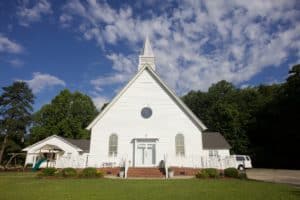
On November 14, 1792, a lease was drawn granting Elisha McBride and Joshua Gamberling, (in trust of the Methodist Society) and Joshua McPherson and Morgan Cartwright, (in trust for the American Episcopal Church), a parcel of land for joint use of worship. McBride Church was erected in 1837 and remodeled in 1882. In addition to the church, there was once a one room school. This lovely church with simple rainbow colored panes continues to celebrate its rich heritage as the “mother church” of Methodism in northeastern NC.
Resources:
NC Highway Historical Marker – McBride United Methodist Church
African American History/ Underground Railroad
The Dismal Swamp was a known route and destination for freedom seekers. This route was the most rugged and treacherous route where insects, snakes, and wild animals were abundant. It was to this inhospitable place many runaways came. While some runaways were able to blend in with free blacks, many chose to seek refuge among a colony of runaways (called maroons) in the Great Dismal Swamp. The nature of the swamp made it possible for large colonies to establish permanent refuge. The Dismal Swamp Canal, hand dug by hired enslaved labor, opened to navigation in 1805 after twelve years of backbreaking work under highly unfavorable conditions. African Americans made up thirty percent of the waterman in Camden County in the 1790s and were common sights on local waterways. Additional content is located at the Dismal Swamp State Park and Camden County Heritage Museum. Visit the Dismal Swamp State Park or Dismal Swamp Welcome Center to pick up the official Network to Freedom Passport (Cover) & Stamp!
Resources:
African American History/Underground Railroad-Dismal Swamp Welcome Center
African American Heritage of Camden County Brochure
NC Black Heritage Tour ~ Camden County Itinerary
Learn more about the National Park Service Underground Railroad Network to Freedom through the following brochures and sites:
McBride Colored School/Rosenwald School (circa 1926)
Located N.C. 343 & Bunker Hill Road in South Mills, NC
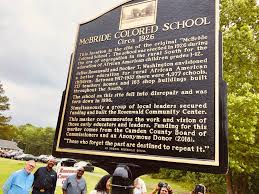
Daily Advance
“This location is the site of the original “McBride Colored School”. The school was erected in 1926 during the era of segregation in the rural south for the education of African Americans children grades K-12. Julius Rosenwald and Booker T. Washington envisioned a better education for rural African American children. Between 1917-1937 there were 4,977 schools, 217 teachers’ homes and 163 shop buildings built throughout the South. The school on this site fell into disrepair and was torn down in 1996. Simultaneously a group of local leaders secured funding and built the Rosenwald Community Center. This marker commemorates the work and vision of those early educators and leaders. Funding for this marker comes from the Camden County Board of Commissioners and and Anonymous Donor (2018). “Those who forget the past are destined to repeat it.” An original Rosenwald School” (NC Black Heritage Tour Site)
NC Highway Historical Markers
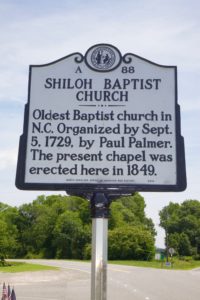
Camden County features 8 North Carolina Highway Historical Markers. Visit NC Markers to learn more about this program.
Camden County’s Markers:
- Battle of South Mills (NC 343 southeast of South Mills)
- Dismal Swamp Canal (SR 1243 or NC 343 at South Mills)
- Dempsey Burgess (US 158/NC 34 at Camden)
- Issac Gregory (US 158/NC 34 at Camden)
- Lemuel Sawyer (US 158/ NC 34 Southwest of Camden)
- William Reed (NC 343 southeast of Camden)
- McBride Church (US 17 Business & NC 343 at South Mills)
- Shiloh Baptist Church (NC 343 South at Shiloh)

